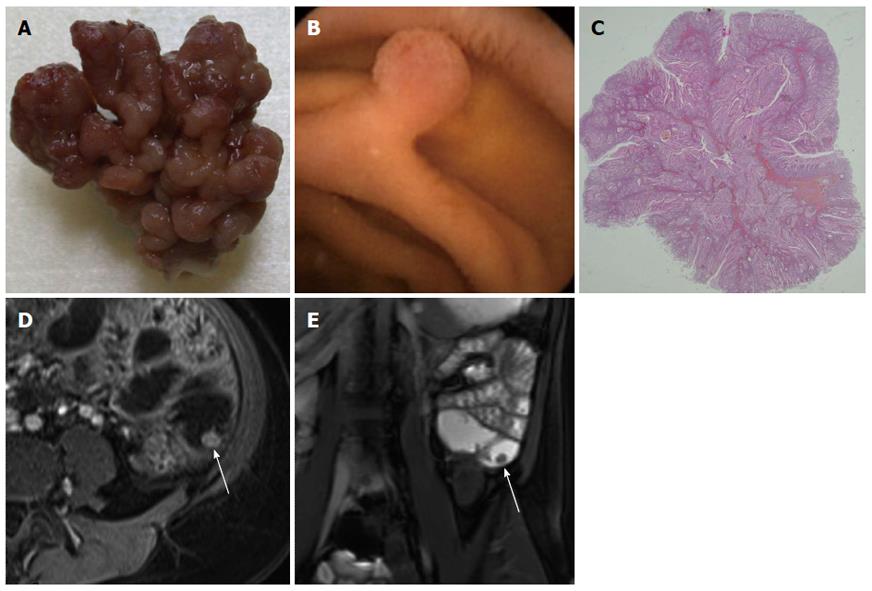Copyright
©2014 Baishideng Publishing Group Inc.
World J Gastroenterol. Aug 21, 2014; 20(31): 10864-10875
Published online Aug 21, 2014. doi: 10.3748/wjg.v20.i31.10864
Published online Aug 21, 2014. doi: 10.3748/wjg.v20.i31.10864
Figure 1 Polyp 1 in a 46-year-old female with known peutz-Jeghers syndrome.
A: Macroscopically, the peutz-Jeghers syndrome (PJS) polyp has a coarse lobulated surface; B: The capsule endoscopy image shows that this polyp is pediculate; C: Microscopically, the analysis confirms a benign hamartomatous polyp with a tree-like branching core derived from the muscularis mucosae covered by normal epithelium; D: Fat-suppressed axial T1-weighted-Gadolinium-enhanced VIBE image shows a moderate enhancement of the polyp, with a good characterization of its size and shape (arrow); E: The coronal T2 True Fast Imaging with Steady-state in Precession (FISP) MR image also allows detection of this isolated ileal polyp (arrow).
- Citation: Tomas C, Soyer P, Dohan A, Dray X, Boudiaf M, Hoeffel C. Update on imaging of Peutz-Jeghers syndrome. World J Gastroenterol 2014; 20(31): 10864-10875
- URL: https://www.wjgnet.com/1007-9327/full/v20/i31/10864.htm
- DOI: https://dx.doi.org/10.3748/wjg.v20.i31.10864









